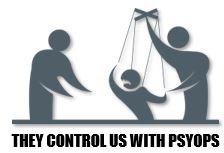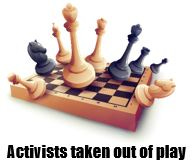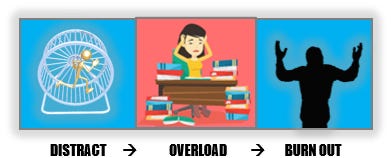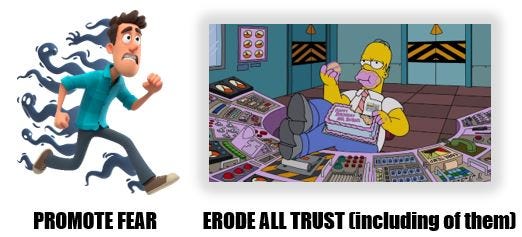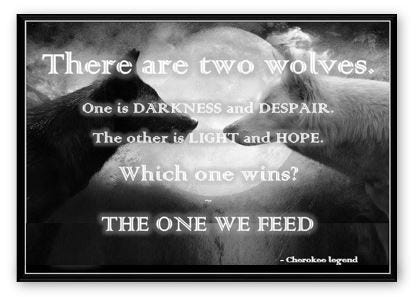This is a new entry in our “Be the Change” department, which speaks most urgently to the activists and change-makers among us who want to make a positive difference in our world.
Too much to do, not enough time
The best health news show on any media today, in my opinion, is Del Bigtree’s The Highwire.
Jeffrey Jaxen’s reports and special investigations are always spectacular, revealing news I wasn’t aware of or providing important new insights.
And Del’s interviews and his simplified explanations of complicated subjects are incredibly valuable, making every precious minute of watching worthwhile.
I’ve learned more from The Highwire about what government is doing, and hiding, in the health freedom realm, than from any other source.
Yet I’ve only managed to watch maybe three and a half of their weekly, two-hour episodes all year.
Why?
Because I spend most of my days chasing down, validating, or analyzing, and debunking/explaining claims that pop up daily in my feeds, and reading/watching bite-sized content that keeps me abreast of the news.
Then I scramble to write posts that help readers (and those they share with) contextualize and manage this daily deluge of conflicting information.
But I often wonder what good I’m doing.
There are thousands like me doing the same thing.
I try not to duplicate good work others have done. In that case, I just share their content with my audience.
Where I add value, I think, is in seeing connections and patterns others might not notice, and making confusing subjects easier to understand.
The problem is that so many of us are blinded by distractions and even busywork. Blocked from even seeing, much less reviewing or sharing what could be some of the best tools out there to open minds and foster unity.
If only we could get the movable middle to take a couple of hours each week to watch The Highwire, we’d have a much more tolerant and enlightened populace.
If only that movable middle would just read my first article or watch my short video here, they might be less afraid of common infections and less likely to fall for vaccine propaganda.
But that “middle” is just as distracted and inundated with content as we are.
And that inundation is all part of the psychological operations (PSYOPS) controlling us every day (or trying to).
PSYOPS programs – there’s candy for everybody
Those of us who are awake like to believe we’re immune to manipulation by those who would control us. But we’re not.
I often say “there’s candy for everybody,” meaning that each of us can be lured away from meaningful action by some kind of bait. I’m no exception.
Whether it’s an addiction to mainstream media’s fear-porn, or decoding Q-Anon’s cryptic “drops” and looking for evidence of secret justice achieved, or chasing after Truth in every new scientific study ... we’re all being consumed by something that is designed specifically to keep us from making a real difference.
“Wake up, you’re being played”
This harsh but insightful article lays out the facts about PSYOPS in easily consumable pieces.
It’s a must-read for anyone who is self-aware and wanting to help reduce corruption and the dangerous fear-fueled divide among us.
No matter how smart or clever or vigilant we are, we can be detoured, misdirected, or otherwise rendered ineffective by one or more tricks in their playbook.
Nobody’s immune. Not me. Not you
Doctors Robert and Jill Malone wrote a brilliant book about PSYOPS.
Though this recent article was my tipping point.
Don’t feed the PSYOPS
It helps to be aware that we can be, and are being, manipulated. Like a magician’s illusion, once we see how it’s done, the trick no longer has the power to fool us.
But even being aware of the tricks and their constant delivery of various forms of manipulation doesn’t make us completely immune.
We have to conduct regular reality checks and be brutally honest with ourselves.
My aha! moment
I was aware of many of their tricks. But before I read this recent article, there was one question I couldn’t answer: Why would our government leaders freely and openly claim to be bumbling idiots?
Take 9/11 for example.
After the attacks, many members of the Bush administration claimed they couldn’t previously have imagined an event like this.
They were like a bunch of Homer Simpsons, dropping donuts into the nuclear reactor controls, and slapping their foreheads, muttering, “D’oh!” as the reactor blows up.
These top officials responsible for America’s safety claimed ignorance, despite clear and unambiguous proof that their own people were planning for and executing simulations of that very scenario…
Including at least five active exercises on the day of the attacks. Exercises that confused air traffic controllers and diverted military interceptors from the needed areas.
“Nobody in our government, at least, and I don’t think the prior government, could envision flying airplanes into buildings on such a massive scale.”
-George W. Bush, US President
“I don’t think anyone could have predicted that these people would take an airplane and slam it into the World Trade Center.”
-Condolezza Rice, US National Security Advisor
“Oh goodness no! Never would have crossed anyone’s mind.”
(Donald Rumsfeld, on whether he could have imagined the 9/11 scenario)
and…
“I knew of no intelligence during the six-plus months leading up to September 11 to indicate terrorists would hijack commercial airliners, use them as missiles to fly into the Pentagon or the World Trade Center towers.”
-Donald Rumsfeld, US Secretary of Defense,
“You hate to admit it, but we hadn’t thought about this.”
- General Richard Myer, acting US Air Defense Commander
“There were no warning signs that I’m aware of that would indicate this type of operation in this country.”
-Robert Mueller, FBI Director
Are you kidding me?
Then there was the 9/11 Commission Report that provided a whole chapter called, “The System Was Blinking Red.”
This chapter details countless relevant threats our intelligence agencies were tracking in the weeks and months preceding the attacks, yet shockingly failed to stop.
No, our leaders weren’t clueless. They just lied to us, over and over, pretending to be fools.
Tricks of the PSYOP trade
So I’ve asked myself: Why would our so-called leaders be so willing and eager to use stupidity and incompetence as their excuse for letting terrible things happen?
Turns out the stupidity act is part of the PSYOP. It’s an element of the “destroy trust” gambit. But I’m getting ahead of myself.
Let’s look at some of the techniques described in the PSYOPS article.
The “firehose of falsehood” and “flood the zone.”
The tactic is to push out huge volumes of information. Truths, lies, for or against. It doesn’t matter.
What matters is that volume + repetition (of desired messages) = believability.
And volume + other tricks = burnout.
When truth is drowned out by the noise, we overload and stop trying to use reason. Instead, we simply react emotionally or instinctively (fight, flight or freeze).
Weaponized ambiguity.
A deluge of contradictory claims, where details change often, keeps truth-seekers off balance, and exhausts us until we abandon rational research and evaluation and resort to emotional “judgment.” or reliance on the “priests” of our chosen belief system.
A burned-out populace is a knee-jerk/emotional populace easy to manipulate through their emotions.
Information overload.
The deluge of provocative and contradictory messages keeps people focused on everything BUT making a meaningful difference. It takes us out of play, like a chess piece off the board.
The key to the PSYOP is to keep us jumping from one clue, false clue, or alternative to another. Keep us frantically racing in our hamster wheels, going nowhere.
Oh, and by the way, we help them burn us out when we generate and share speculative or divisive materials and watch every video that pops up on our feeds and suggestions.
This burnout can easily lead to exhaustion and surrender. That’s why so many noble warriors have been tempted to give up.
Divide and distract.
They force-connect every subject to a polarized position. The goal is to make open-mindedness and searching for truth dangerous, alienating us from our tribes and from our larger, more diverse, human communities.
Creating an “us vs. them” situation for every topic and position makes enemies of “them.” And enemies are to be feared, hated, and ideally destroyed before they can destroy “us.”
Erode trust and promote fear.
This is the trick that explains the easy admissions of ignorance and incompetence among our top leaders.
The tactic is to sow seeds of doubt about every possible source of information: media, government, companies and organizations, scientific experts, even our friends.
Once we become suspicious of everyone, fear takes over. And fearful people can be easily manipulated by any puppetmaster.
7 ways to avoid the PSYOPS traps
1. Make every minute count.
Consider the potential value of your efforts before spending any of your time debunking lies, myths, and misrepresentations, trying to change people, or to fight, resist, or promote something.
Ask yourself whether the actions you are about to take are actually giving the PSYOPS controllers what they want: your distraction, confusion, division—in other words: doing anything but making a real difference.
Ask yourself, “How does this action help fix the problem?” whenever you’re about to invest time in a podcast or article, conversation or research.
Even if it is simply a temporary distraction, a break from hard thinking or hard tasks, know that’s what you’re using that time for and don’t let it descend into a “just one more” addiction.
2. When it matters, do your own fact-checking. And know when it matters.
When my friend posted a meme that claimed Trump said he didn’t care about fixing America, I gave the PSYOPS overlords a few minutes of my time chasing down the truth. I did it because if the claim were true, in context, I would need to adjust my perspective on Trump.
Turned out he was replying to the “How do we fix America?” question by first saying he would probably get in trouble for answering honestly, but he didn’t care (about getting in trouble for answering honestly). Then he answered the question.
But I didn’t bother to post the truth or comment, because I knew my friend would find other reasons to hate Trump. Any further action would be a waste of my time.
See tip #1
3. Refuse to play their game.
Avoid giving any amount of your time and energy to chasing lies and ambiguous or conflicting information. If you personally need to know the truth about something for a specific purpose, check it out.
But consider whether this new information will change how you feel or act.
Will this information make you any better able to present or defend what you know about a subject?
Will seeing more examples of how awful a war or genocide or trafficking operation or lawless place or organization is make you better able to stop that terrible thing?
If not, give your time to a more productive endeavor.
4. Invest in healing the divide, cooling off tensions. Foster peace and compassion.
Respectfully talk to people who think and feel differently than you. Ask first.
Take it in small bites, with one uncomfortable exchange, then move on to easier subjects.
Don’t firehose them with your own soundbites. If they lob soundbites at you, ask if you two can explore just one point at a time. Not to debunk them, but to explore how this subject or soundbite makes them feel. What threats do they perceive?
Don’t try to change their minds or prove them wrong. Relax and settle into “curious mode.”
Ask them questions that help you understand how they view the world and why they feel as they do.
And really listen. Try to put yourself in their shoes, to feel what they feel.
Then, if they seem receptive, ask if you can share how the same situation looks and feels to you.
This is typically a one-on-one, long-term effort with special friends who trust you. But groups like Braver Angels are great for bringing together many people with opposing views and helping them find agreement and caring for the “others.” Join and help grow such groups.
“It isn’t enough to talk about peace. One must believe in it.
And it isn’t enough to believe in it. One must work at it.”
– Eleanor Roosevelt, US delegate to the UN
5. Plan actions that can actually make a difference, whenever possible.
Before we spend any of our (or others’) time, we should define the objective of the proposed action. And not some squishy “show support/opposition” kind of objective. I mean a “move the needle” kind of goal. What tactical actions can make a real difference?
Don’t beg on your knees for something you should stand up and fight for.
Clark Gable (1936)
During covid, many of the activists I knew were taken out of play, relying on their trust in mysterious White Hats, good guys that Q-Anon promised were busy taking out the bad guys behind the scenes.
What I’d hoped to see instead was, for example, masses of mask-free protesters outside and inside stores and in parks and wherever the fearful still went.
I wanted to see health-freedom patriots carrying signs and wearing tee-shirts that said something like, “Naturally immune: the safest person to be around.”
I wanted to see them on the news or even in my own city where I could join them. Even if they were bring arrested, like in the courageous ‘60s. Audiences would see their messages, feel their courage, and resist the tyranny in their own small ways.
So why didn’t I organize such events myself?”
Trust me, I’ve been trying to mobilize folks for a long time now. Organizing meetings, events, creating activist groups, making videos and hosting screenings, giving talks, even creating this newsletter.
I was part of Occupy Dallas way back when...until I learned that they couldn’t (or wouldn’t) even articulate what they wanted from government, banks, or Wall Street.
They raked me over the coals in “the circle” for smelling a bit too much like a leader, when I proposed a group action that could have made a meaningful difference.
Today, I have neither the audience reach nor the money to compete with the billionaire organizers and distractors pulling the protest strings.
That’s no excuse, of course. But it is a feature of the PSYOP: overwhelming the little guys and creating infinitely subdivided attention.
Even if I had a substantial audience, my followers would have to choose which of the hundreds of “good causes” and worthy actions they should invest their valuable time and resources in.
6. Consolidate outlets and audiences. Reduce the fracturing of attention.
This glorious and terrible diversity of media outlets splits our attention until there’s no time left to actually USE the information we’ve been exposed to.
Every newsletter or podcast eats some of our time. But without investing in it, we don’t how much of it is duplicative or unique. And if unique, is it valuable, worthy of our time?
If I had the power to do one thing, I would get like-minded protest groups to combine events. And I would encourage the myriad online media outlets I follow to consolidate/merge along common philosophy and topic lines.
Or at least agree not to duplicate stories. If one outlet knows another outlet did a terrific interview or report on a subject, they should simply point their audiences to that source. Maybe with a brief commentary that adds value.
Which brings me back to the best health show on any media: The Highwire. A great weekly show…which often runs two hours or longer.
But instead of making time to watch it, I end up consumed by a plethora of shorter content (that I can skim through more quickly), and creating my own content, until there’s nothing left of me.
And that’s a real shame.
To resist the PSYOPS, I need to protect time each week to watch this higher-quality show. And then I might be able to skip much of the shorter content.
7. Know what you’re doing and do it on purpose.
Though it’s important to make your actions count, it is sometimes beneficial to break the rules on purpose, especially when there is a broader goal involved. Just be aware of what you’re doing and how it serves the overall objectives.
Preaching to the choir.
Many of us activists complain that we too often “preach to the choir,” or confine ourselves to silos and echo chambers where our messages never reach beyond our own walls. This can be wasted time spent “looking busy.”
But if the materials and media we‘re creating and sharing within those walls are tailored for easy consumption by “the moveable middle” outside those walls, then we must make sure those materials get distributed to receptive audiences outside “the choir.”
Many articles posted on this newsletter, for example, cover topics regular subscribers are already aware of.
But these are simplified presentations of that information, designed to make it easy for open-minded others to access concepts they hadn’t been exposed to before.
Still, these articles are worthless unless we insiders share them with others.
Especially if we follow up, gently and respectfully asking what they thought about the content, answering their questions, and discussing their concerns.
Therapeutic surrender.
Go ahead and quit! Seriously. It can be very therapeutic. I’ve quit many times. And I really mean it every time. In fact, that conviction of surrender lets me fully release the burden I’ve been carrying and take a deep breath.
Invariably, I get back in the game, reenergized and refocused. Or I realize the mission isn’t worth pursuing, or others are already doing it. But it’s a great exercise.
Therapeutic busywork.
It’s also okay to mobilize our groups or followers simply to ease their tensions and make them feel they’re doing something about a stubborn problem, even when they aren’t.
The key is to admit (to ourselves and our leadership teams) when the planned action is not intended to move the needle forward on our mission, but to provide a pressure-valve for the troops.
For instance, the well-funded nationwide anti-Trump and anti-Musk protests earlier this year accomplished very little. Participants carried signs and shouted soundbites they couldn’t support or defend. But they felt like they were doing something. And that was the benefit to the organizers who were trying to keep the troops engaged and feeling useful.
Bottom line
Self-awareness is the key to successful immunity. We need to be aware of the PSYOPS constantly applying tricks and pressure to keep us out of meaningful action. Distracted. Divided. Fearful.
When we’re vigilant and self-aware, we can resist their manipulation.
And when we catch ourselves dwelling in darkness or spinning in the hamster wheels going nowhere, we must instead find ways to heal the divide, manifest goodness and unity, and build the confidence, courage, and purpose that dispels fear.




